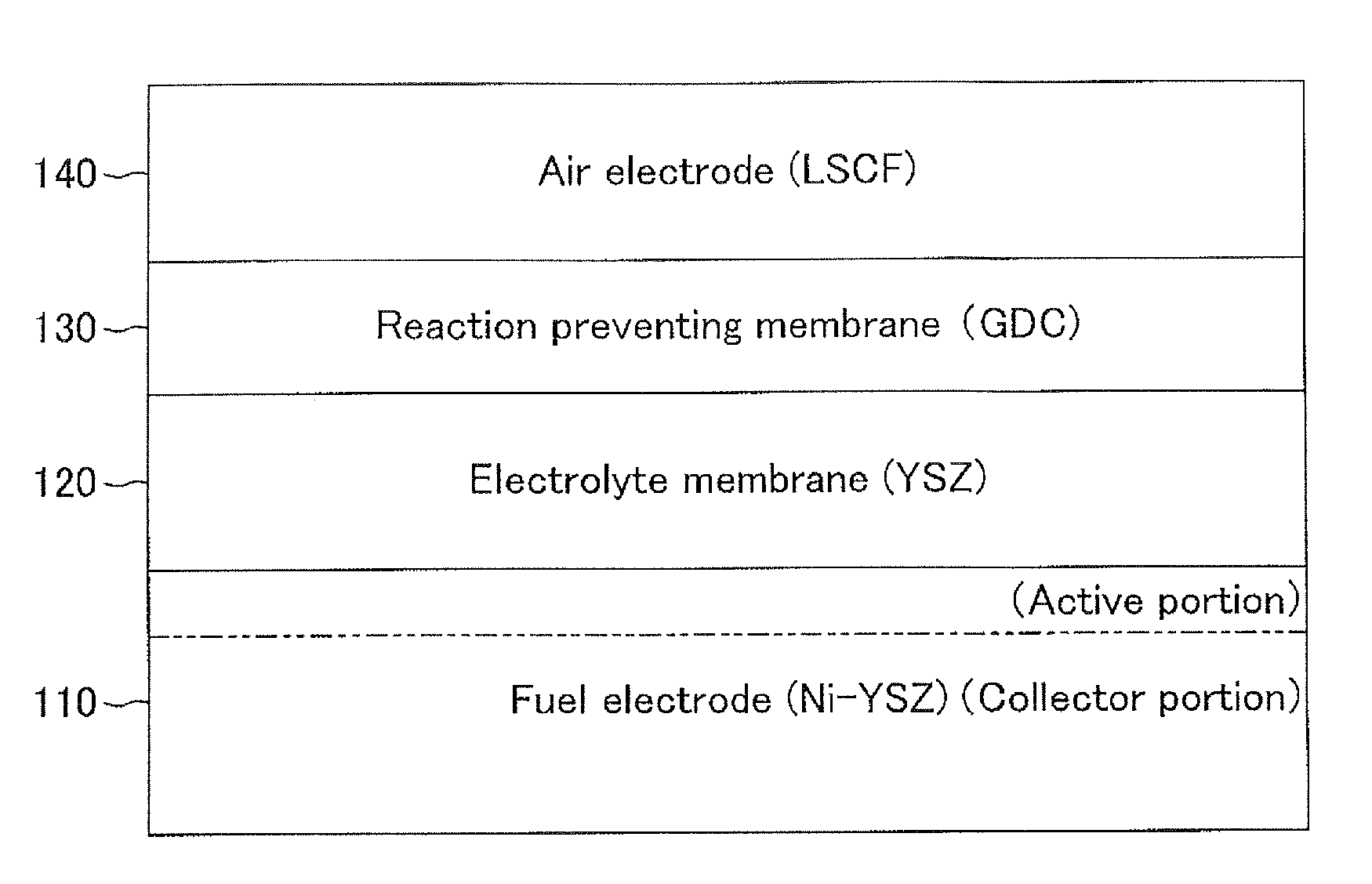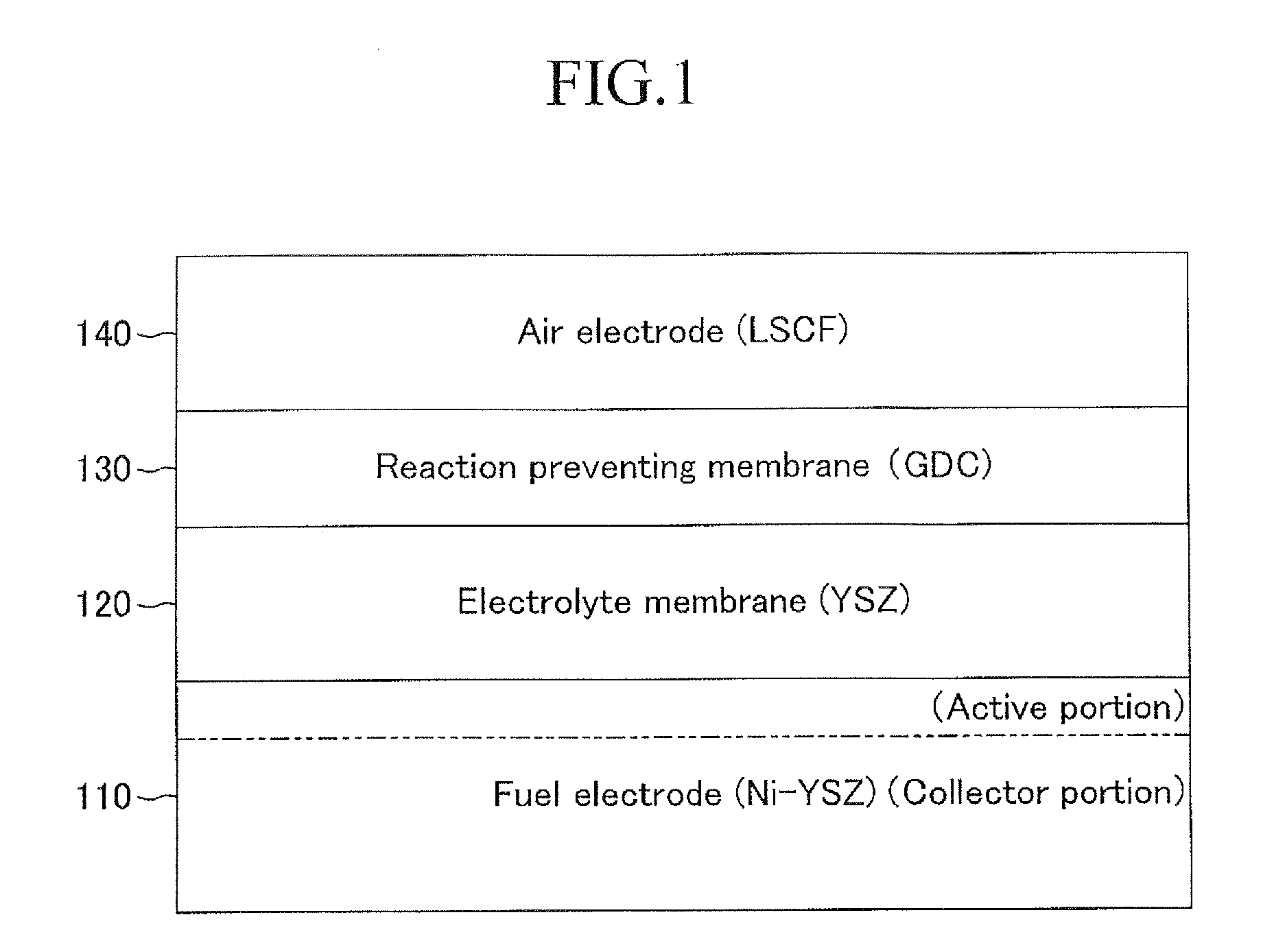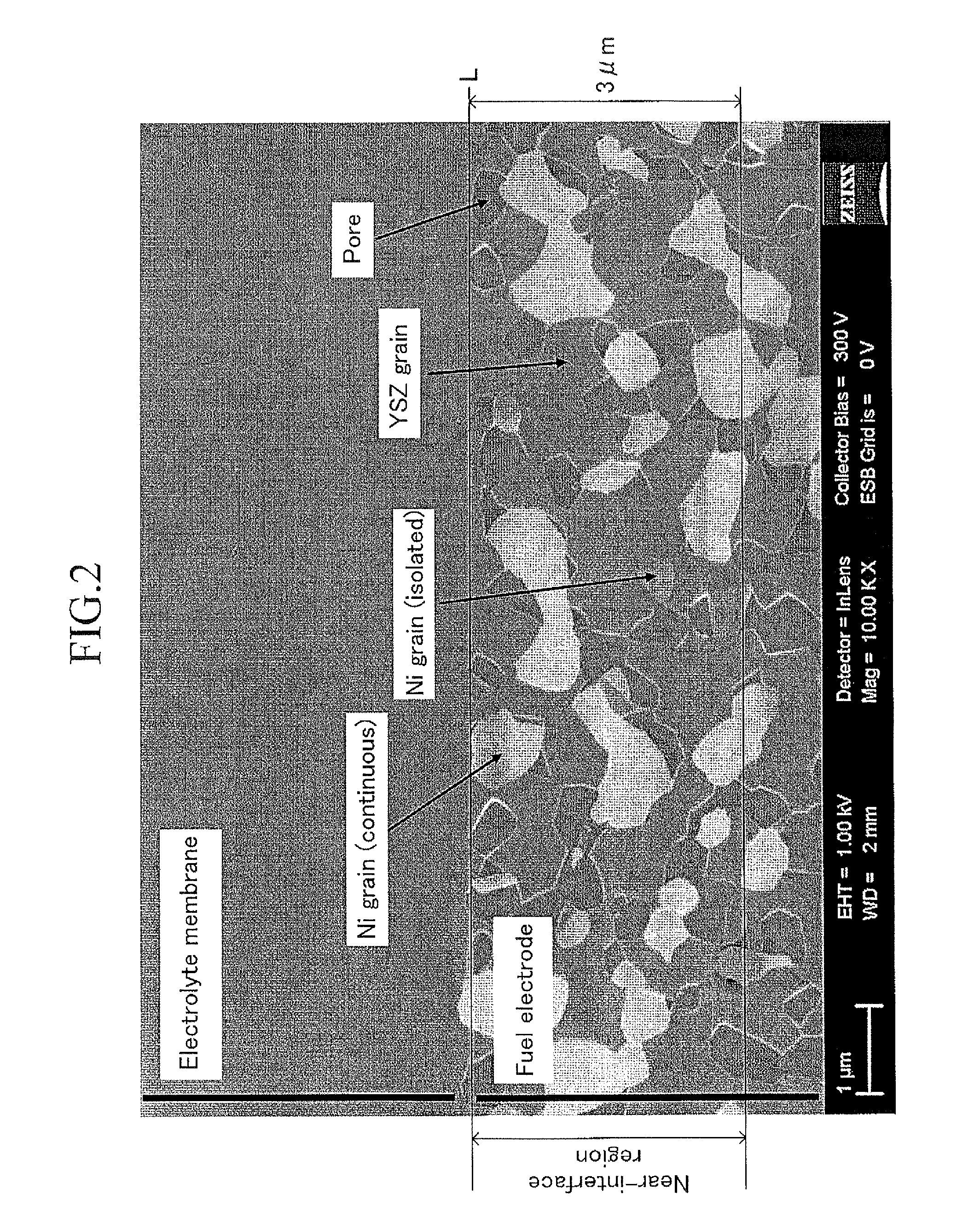Solid oxide fuel cell
a fuel cell and solid oxide technology, applied in the manufacture of cell components, final product manufacturing, electrochemical generators, etc., can solve the problems of difficult to distinguish ni grains from ysz grains, and achieve the effect of further reducing the reaction resistance of the fuel electrod
- Summary
- Abstract
- Description
- Claims
- Application Information
AI Technical Summary
Benefits of technology
Problems solved by technology
Method used
Image
Examples
Embodiment Construction
Configuration
[0025]FIG. 1 schematically shows the configuration of an SOFC cell according to an embodiment of the present invention. The SOFC cell is a layered product including a fuel electrode 110, an electrolyte membrane 120 stacked on the fuel electrode 110, a reaction preventing membrane 130 stacked on the electrolyte membrane 120, and an air electrode 140 stacked on the reaction preventing membrane 130. As viewed from above, the cell is in the form of, for example, square (each side: 1 to 30 cm), rectangle (longer side: 5 to 30 cm, shorter side: 3 to 15 cm), or circle (diameter: 1 to 30 cm). The cell has a thickness of 0.1 to 3 mm.
[0026]The fuel electrode 110 (anode) is a porous, thin plate-like fired product formed of, for example, nickel oxide (NiO) and yttria-stabilized zirconia (YSZ). The fuel electrode 110 has a thickness of 0.1 to 3 mm. The fuel electrode 110 has the largest thickness of all the constitutive members of the cell, and the fuel electrode 110 also serves as ...
PUM
| Property | Measurement | Unit |
|---|---|---|
| mean size | aaaaa | aaaaa |
| mean size | aaaaa | aaaaa |
| size | aaaaa | aaaaa |
Abstract
Description
Claims
Application Information
 Login to View More
Login to View More - R&D
- Intellectual Property
- Life Sciences
- Materials
- Tech Scout
- Unparalleled Data Quality
- Higher Quality Content
- 60% Fewer Hallucinations
Browse by: Latest US Patents, China's latest patents, Technical Efficacy Thesaurus, Application Domain, Technology Topic, Popular Technical Reports.
© 2025 PatSnap. All rights reserved.Legal|Privacy policy|Modern Slavery Act Transparency Statement|Sitemap|About US| Contact US: help@patsnap.com



